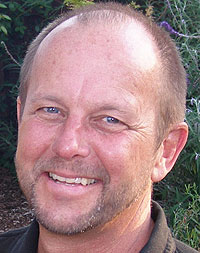 Fast Pitch SB—a Shark Tank style competition for nonprofits to make three-minute pitches to a panel of judges and a live audience for cash awards, including a $25,000 Judges award and two $10,000 Coaches awards—is off and running.
Fast Pitch SB—a Shark Tank style competition for nonprofits to make three-minute pitches to a panel of judges and a live audience for cash awards, including a $25,000 Judges award and two $10,000 Coaches awards—is off and running.
Social Venture Partners Santa Barbara (SVPSB) has chosen the following semi-finalists out of a field of more than 100 applications from nonprofits looking to receive personal coaching and communications training from experts in the field:
A Different Point of View, whose mission is to engage, inspire and transform underserved youth using flight lessons as a launching pad.
AHA! is dedicated to the development of character, imagination, emotional intelligence, and social conscience in teenagers.
American Indian Health & Services is committed to empowering our community delivering accessible, socially responsive, and culturally appropriate health care.
Angels Foster Care of Santa Barbara places infants and toddlers in loving homes throughout Santa Barbara County.
C.A.R.E.4Paws works to reduce pet overpopulation and keep animals out of shelters in Santa Barbara County.
CASA of Santa Barbara County: The mission of Court Appointed Special Advocates (CASA) of Santa Barbara County is to assure a safe, permanent, nurturing home for every abused and/or neglected child by providing a highly trained volunteer to advocate for them in the court system.
Family Care Network, Inc. operates family-based treatment programs as an alternative to group home or institutional care for children and youth and serves over 1,400 children, youth and families annually in San Luis Obispo and Santa Barbara counties.
Girls Incorporated of Carpinteria provides programs for girls 6 to 18 years old that focus on science, math, and technology; health and sexuality; economic and financial literacy; sports skills; leadership and advocacy; and media literacy.
Hospice of Santa Barbara, whose mission is to care for anyone experiencing the impact of life-threatening illness or grieving the death of a loved one.
Just Communities advances justice by building leadership, fostering change, and dismantling all forms of prejudice, discrimination and oppression.
Leading From Within provides leadership development for the nonprofit community offering programs for executive directors, emerging nonprofit leaders, and helping to build the capacity of the nonprofit sector, nurture and sustain committed community leaders, and develop the next generation of engaged and involved citizens.
Museum of Contemporary Art Santa Barbara, which advances creativity and inspires critical thinking through meaningful engagement with the art of our time.
Sama Group, a family of impact enterprises dedicated to ending poverty and promoting social and economic justice.
Santa Barbara Bicycle Coalition, a countywide advocacy and resource organization that promotes bicycling for safe transportation and recreation.
Santa Ynez Fruit and Vegetable Rescue (“Veggie Rescue”) redirects or “gleans” local produce from farms, farmers markets, home gardens, and orchards and deliver it to charitable organizations and school lunch programs in Santa Barbara, Santa Ynez and Santa Maria—all at no charge.
Sarah House Santa Barbara, which provides a home and end-of-life care for people with low income.
Solvang Elementary School’s Viking Cafe, a brand new lunch program that is reforming the old school re-heated foods into farm fresh organic fruits and vegetables.
Teddy Bear Cancer Foundation, which provides financial and emotional support to families of children with cancer living in Santa Barbara, Ventura, and San Luis Obispo counties.
The Center for Urban Agriculture at Fairview Gardens works to preserve and operate Fairview Gardens, the historic and educational farm in Goleta.
Sanctuary Psychiatric Centers of Santa Barbara has been providing a distinctive continuum of care for mentally ill and co-occurring disorders adults since 1976.
The ten finalists will be announced on May 9.
Those groups will present their three-minute “fast pitch” to a panel of judges at the Music Academy of the West on May 15. There will be a live audience populated with potential investors, donors and community members, as well as satellite voting and viewing locations set up throughout Santa Barbara.
For more information about getting involved with Fast Pitch SB click here. To read a Santa Barbara SEASONS story about Fast Pitch SB click here.
—Leslie Dinaberg
Originally published in Santa Barbara SEASONS on March 28, 2014.

 The Archstone Foundation
The Archstone Foundation 

 “A PLACE WHERE COMPASSIONATE CARE is freely given”—that’s how retiring executive director
“A PLACE WHERE COMPASSIONATE CARE is freely given”—that’s how retiring executive director 


